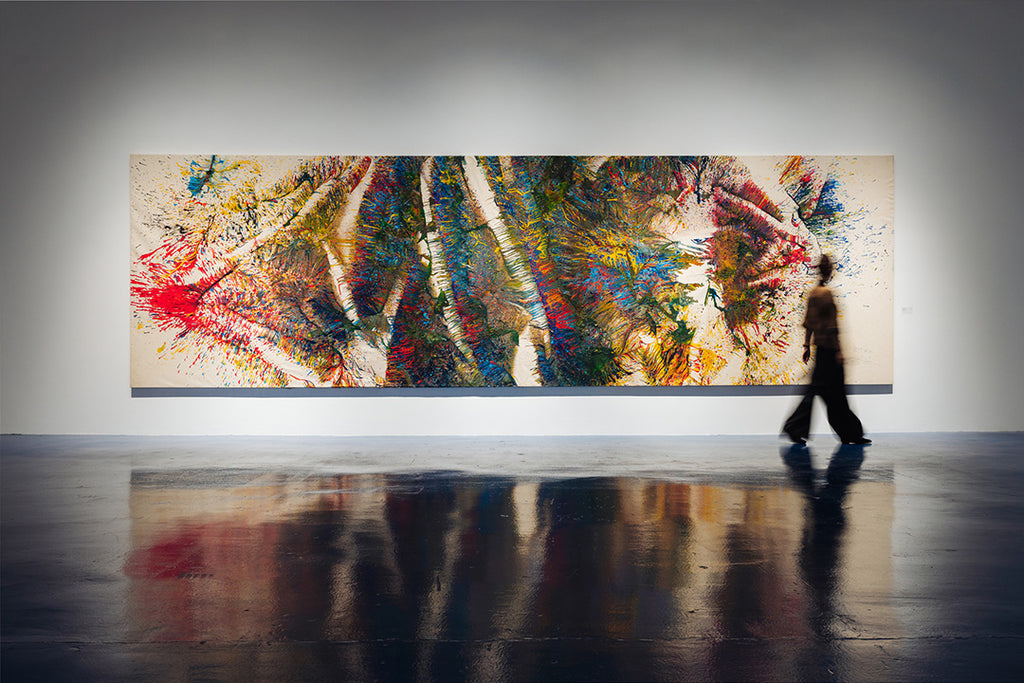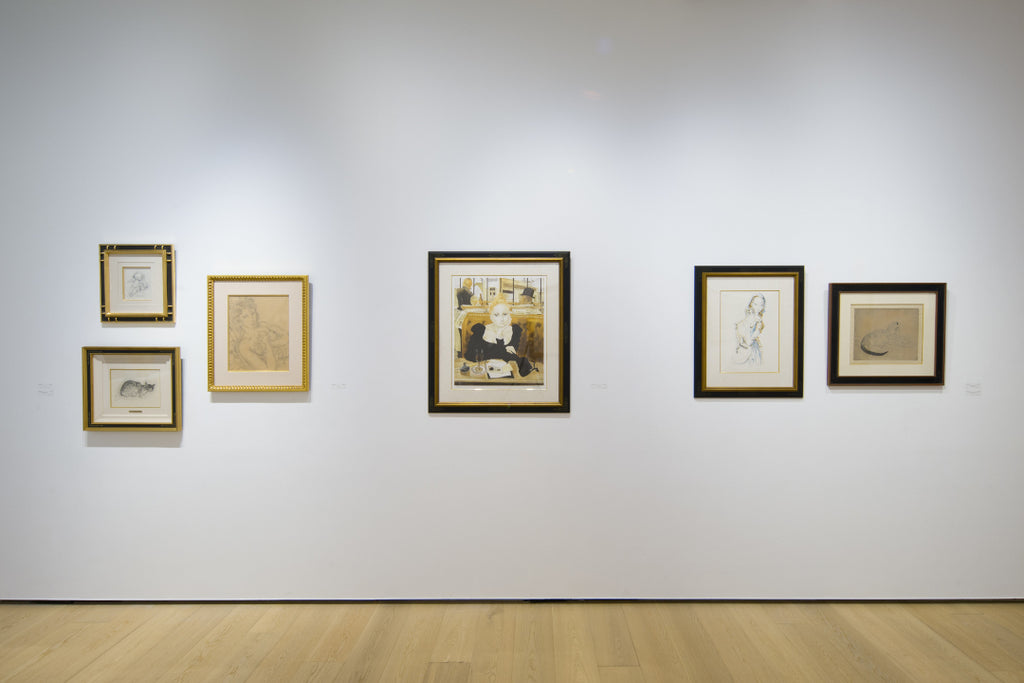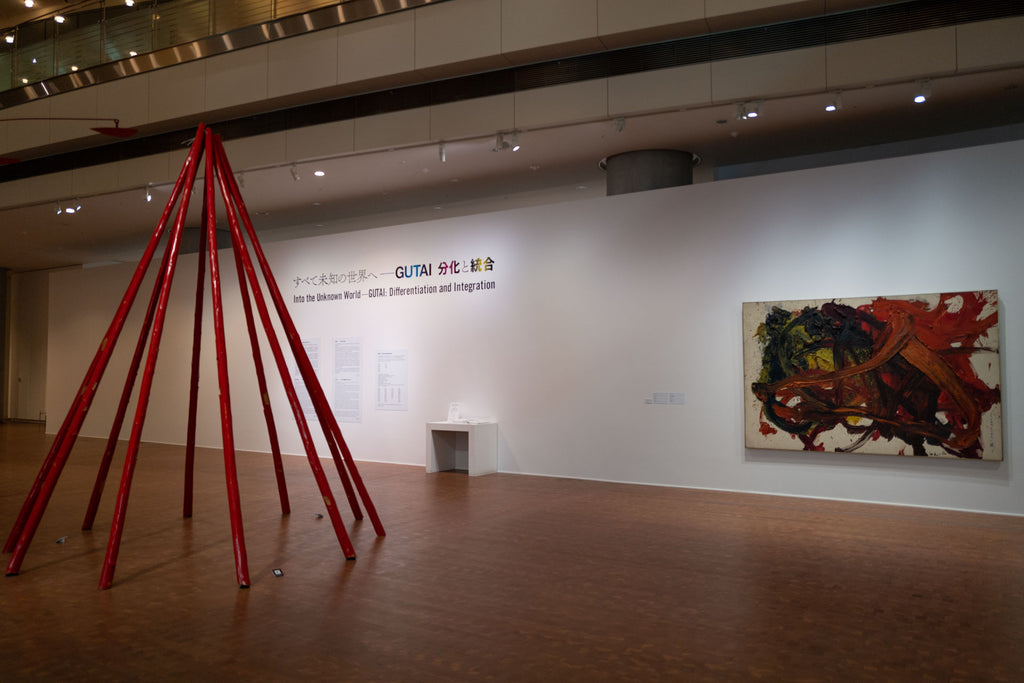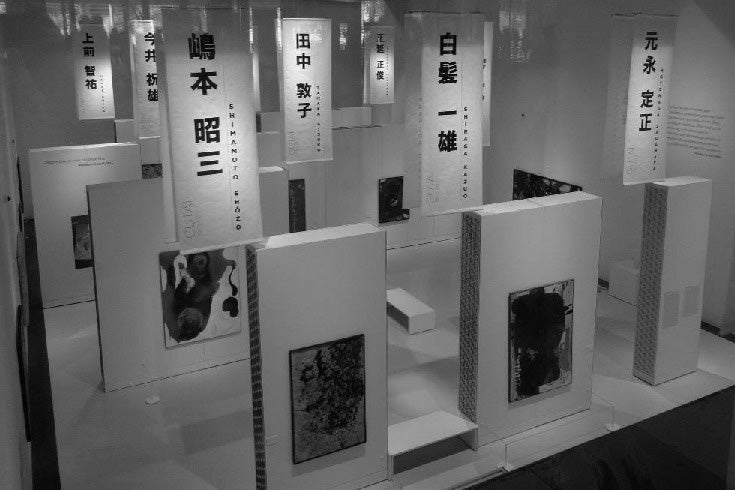ARTICLES
Beginning and Ending with Water | Etsuko Nakatsuji on Sadamasa Motonaga's Way of Life
GUTAI STILL ALIVE 2015 vol.1
30/35

「SADAMASA MOTONAGA: Special Exhibition」Whitestone Gallery Taipei
A project evolving the digitized archive of the book, “GUTAI STILL ALIVE 2015 vol.1”. The 30th edition focuses on Sadamasa Motonaga, a member of the Gutai Art Association from 1955 to 1971. Wife and creative partner Etsuko Nakatsuji talks about Motonaga's relationship with Gutai leader Jiro Yoshihara, his artistic activities after leaving Gutai, and the changes in his works over the years.
Two Artists Living Together
The Way of Life of Sadamasa Motonaga as Told by his Wife Etsuko Nakatsuji
By chance Motonaga’s final work was also “Work (Water)…"
The spacious studio of Etsuko Nakatsuji in Takazuka, Hongo is packed with her works and those of her late husband Sadamasa Motonaga. In this room filled with light Motonaga’s works seem brimming with a certain cheer. In one corner is placed a model of the Guggenheim Museum, New York, used in preparation for the “Gutai” exhibition which took place there in 2013. In this exhibition Motonaga’s installation “Work (Water)” was one of the most eye catching, with the museum having sent long beforehand this model for Motonaga to consider how to present the work.
2011 was a year of many grave events, at the forefront of which was the Great East Japan Earthquake, but it was also the year which the art world lost one of its giants Sadamasa Motonaga on 3rd October. And it was on that very day that the Guggenheim curator Alexandra Monroe and Gutai researcher Ming Tiampo came from New York to visit Motonaga.
Etsuko Nakatsuji: 1 week before he passed away Motonaga said he wanted to return to his home so he came back. And Monroe and Tamipo said they wanted to have a final meeting on October 3rd before the exhibition, which Motonaga agreed to. And in this way Monroe said that Motonaga’s work for the Guggenheim “Work(Water)” was his final work. It’s strange, he started Gutai with the water sculpture and ended with the same piece. Having said this that exhibition was very calculated. First of all the gallery model arrived, he placed a model of his work inside and took photos and then 6months before the exhibition, in August, my daughter (Beniko Motonaga) went to New York to have a meeting with them. My daughter often helped him with exhibitions, even the Venice Biennale. They really were a pair, sharing a very similar sensibility. And it was my daughter who actually decided on the amount of water and color for the show. Then there was the exhibition engineer who calculated how long it would take the suspended water filled tubes to elongate. Taking into account the building structure and the limitations of the space we were able to come up with a way of presenting the work which followed health and safety regulations. The work has been shown many times, but this was its most perfect execution. At the Guggenheim Gutai show it was Motonaga’s work which appeared to gain the most attention and raised quite a stir. It was the first shown at “The Experimental Outdoor Exhibition of Modern Art to Challenge the Midsummer Sun”, held in Ashiya Park in 1955, in which Motonaga was invited to join by Jiro Yoshihara. At that time he had few financial resources to make his work but he did his best with lengths of plastic sheeting and colored water suspended between the trees. “Work(Water)” was born. He had heard there was a water tap in the woodland and so was inpart inspired by what he had to hand. Over the course of 50 years the plastic sheeting evolved into plastic tubes and brought a fresh surprise to audiences in New York, attracting numerous visitors and gaining rave reviews from the New York Times.
Etsuko Nakatsuji: What I thought was really great was the praise which Yoshihara met this ‘Egg of Colombus’ which Motonaga offered up. If he had said “This is a load of rubbish” then that would have been the end of it. But instead he responded with “This must be the world’s first water sculpture”. It was under Yoshihara’s eye that the careers of the Gutai artists were fostered.
Sadamasa Motonaga and Etsuko Nakatsuji first met in the art school of Nishinomiya. 5 teachers of the teachers working here were active amongst the Hanshin art scene, including painter Kokuta Suda. And it was to be the drawing class which Motonaga belonged to which Nakatsuji joined.
Etsuko Nakatsuji: I joined the art club in my high school days and had drawn and painted actively since then. But my father died and I couldn’t go to university, so once I had found a job I decided to join an art circle and continue my interest. It was here that someone introduced me to the art school in Nishinomiya and so I went to see what it was like. Motonaga had already joined the class, and when I first saw him I thought “I know this person”. Of course it was the first time I had ever met him, but from the very beginning I felt familiar with him. It was around 1957 and he had been involved in Gutai for 2 years and was producing work with the group. I was just 20 at that time and so when I spoke to him and he proclaimed the importance of always challenging towards something new I was in firm agreement and was easily carried along by his talk, conversing for hours. I couldn’t put my own thoughts into words but the ideas which he spoke of I ardently agreed with. We became close but I sometimes tried to keep a distance as he had a habit of phoning me at work, but one time we bumped into each other in Kyoto and he said “I’m doing an exhibition here why not come and see”. And so the very first Gutai exhibition I saw was that at the Kyoto Municipal Museum of Art. At the time I was working as a designer for the Hanshin Department Store, and I came to feel a sense of innovation here too, probably due to my encounter with Gutai. I had met with new ideas, and while I didn’t know the first thing in basic advertising I continued to challenge towards this innovation, making my design work a bit like the role of Gutai within art. The Hanshin Store had only just been launch so there was a certain air of freedom which allowed this.
Sharing the same pursuit of new ideas and expressions, the two married in 1960. They came to live together and even produced a picture book together with the illustrations of Motonaga and the design of Nakatsuji. They went on to frequently exhibit their work together, presenting across a wide variety of shows.
Etsuko Nakatsuji: He really liked to draw. But he often complained he had no time to draw due to all of his engagements with Gutai exhibitions, working on theatre, making performance etc. As part of Gutai he had numerous exhibitions to join each year. But then he got a grant from the Japan Foundation and spent 1 year living in New York. This was to have a profound impact on the direction of his work. He didn’t have the same pressure to produce work so he had time to stop and think. He seemed to shift over 10 year periods. Before he joined Gutai he studied under the local artist Mankichi Hamabe and had continued 10 years of figurative work. Then he came to Kobe and met with a form of new art and joined the Gutai group exhibitions for another 10 years. And when he went to New York, he came to pursue something more formal, then combining “form” and “flow” in his later years. He himself probably wasn’t aware of it but this change took place over around 10 year cycles. But of course I haven’t checked this in fine detail.
In New York he encountered the new painting utensils of the air brush and his style of work underwent significant change, coming to present work which was concerned with form. And then when he returned to Japan he again faithfully joined each Gutai exhibition, but then in 1971, just 1 year before Gutai was to disband, Motonaga left the group.
Etsuko Nakatsuji: Even though he couldn’t say it outright Jiro Yoshihara didn’t want him to quit. Until he achieved the work “Circle”, he grappled with himself as an artist and often called upon Shiraga, Motonaga Shimamoto and Murakami. He could only show his struggle to these 4, they were placed in a position of trust. Motonaga decided to quit Gutai when those others also decided to leave. Perhaps their way of thinking had encountered friction and they were unable to get on in the group. But Motonaga was never despondent, he never fell into indecision. He often said he would never have a slump. And so it was that without any particular warning he had quit. In some ways this enabled him to become free to pursue his own world. But even though he quit he always claimed to hold the Gutai “mind”.
“He was human so he had his cold side too, but just his presence close at hand filled you with warmth. Perhaps it was a kind of aura.” As Etsuko pays tribute to Motonaga was an artist of human warmth, who enjoyed other people’s company. He had a wide encounter with people of many different backgrounds, from the poet Shuntaro Tanigawa, whom he met in New York, to the composer Tohru Takemitsu. And within the Gutai group he was one of the first to exhibit in New York and build a name for himself, always maintaining the Gutai psyche while freely diving into a wide range of creative expressions.
One may also say that it was due to the support of his artist wife that he was able to continue his practice for so long.
(Mothly Gallery, October 2013)
Read more about the “Gutai Art Association »
*Information in this article is at the time of publication.



